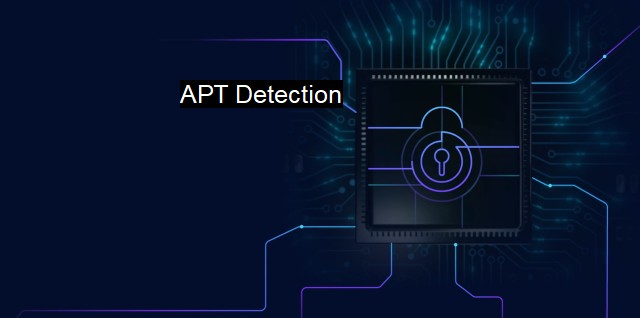What is APT Detection?
The Importance of APT Detection in Ensuring Cybersecurity: Techniques and Strategies for Fending Off Advanced Persistent Threats
A term that has gained popularity over the years is "APT detection." APT stands for Advanced Persistent Threat—a term primarily employed in the focus of Internet and Computer Network-based security breaches. As the digital world keeps expanding into every corner of our day-to-day lives, so do threats and attacks from bad actors seeking to exploit the vulnerabilities in these systems. APTs are one of the extremely destructive and increasingly prevalent occurrences that represent a significant danger in today's hyper-digital age.APT is an advanced and continuous form of cyberattack where an unauthorized person gains access to a network and remains undetected for a prolonged period. These attacks are generally targeted and customized, also quite destructive, with significant financial and reputational consequences for victims. Organizations worldwide, particularly those dealing with a wealth of confidential data, such as large corporations, financial institutions, government agencies, and health institutions, are some of the noteworthy targets for APT attacks.
The value of implementing APT detection in cybersecurity and antivirus applications can't be overstated. The objective behind this quite clearly is to identify any illicit activities within an organizational system before they can inflict any considerable damage. Most detection platforms aim to locate these advanced threats that conventional detection systems may fail to identify. They do so by continually monitoring network activities or scrutinizing any abnormal network behaviors that may potentially manifest as vulnerabilities and can be exploited.
Detection techniques typically involve the identification of malicious files and activities over an extended period. Stay-at-risk signatures, known ADC indicators, zero-day exploits, or malicious DNS requests are examples of what these can incur. Not only do these systems identify with high accuracy an impending APT attack, but they also proffer timely alerts, preventing an already stationed adversary from causing havoc.
It's worth mentioning that APT detection deploys cutting-edge technologies like machine learning and artificial intelligence. Machine Learning aids in scrutinizing an anomaly with its algorithms that can effectively study patterns in a vast set of data and retrodict any noticeable outliers. Meanwhile, the effectiveness of artificial intelligence lies in its versatility—automatically adapting to new information and continually updating its protocols to restrict a possible threat from exploiting any gaps in the firewall.
Another critical component of APT detection is SIEM—Security Information and Event Management software, which provides real-time analysis of security alerts from network appliances and servers. SIEM systems protective capabilities are quite measurably wide: it collects security-centric data from different locations, promptly detecting, storing, reporting any suspicious activity and acting as the first line of defense in preventing APTs.
APT detection is not solely about preventing attacks but is also resilient. It focuses on preserving baseline standards while reducing the effects an attack can potentially spawn. A malicious cyber actor might swiftly learn the intrinsic nature of visibility tools. Therefore, certain additional factors are embedded within systems such as preserving discreetness in visibility and creating honeypots to divert the attention of the adversary from intruding into the main defense line.
Remember, while APT detection tools offer intense security and protection, no security measure is entirely effective on its own. Security systems need to evolve continuously in anticipation of a progressive APT. They must be versatile enough to adapt to these anticipated threats, mitigate risks and anomalies, and provide comprehensive protection against sophisticated cyberattacks. The harmonious amalgamation of aware users, reliable tools, and persistent threat perspectives can set a strong foundation for effective and advanced APT detection, making it an integral part of today's cybersafety landscape.

APT Detection FAQs
What is apt detection in cybersecurity?
APT detection involves the identification and tracking of advanced persistent threats (APTs) through the use of specialized tools and techniques. It enables organizations to detect and respond to sophisticated and persistent cyberattacks that are designed to evade traditional security measures.How does apt detection differ from traditional antivirus software?
APT detection systems are designed to identify and track sophisticated and persistent threats that are often able to evade traditional antivirus software. APT detection tools use a combination of techniques, including behavioral analysis and machine learning, to detect and respond to threats that may be missed by traditional antivirus products.What are the benefits of using apt detection in cybersecurity?
The use of apt detection tools can help organizations to identify and respond to advanced threats more quickly and effectively, reducing the risk of data breaches and other cybersecurity incidents. It can also help to improve overall security posture by providing greater visibility into the network and enabling proactive threat hunting.What are some common challenges associated with implementing apt detection in an organization?
Implementing apt detection can be challenging, as it requires specialized tools and expertise. It may also require changes to existing security infrastructure and processes, which can be complex and time-consuming. Additionally, false positives and false negatives can be a challenge with any threat detection system, and it can take time to fine-tune the system to minimize these issues.| | A | | | B | | | C | | | D | | | E | | | F | | | G | | | H | | | I | | | J | | | K | | | L | | | M | |
| | N | | | O | | | P | | | Q | | | R | | | S | | | T | | | U | | | V | | | W | | | X | | | Y | | | Z | |
| | 1 | | | 2 | | | 3 | | | 4 | | | 7 | | | 8 | | |||||||